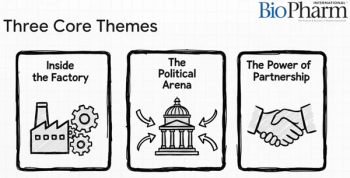
PhRMA Transitions Management of its Benefit-Risk Action Team
The Pharmaceutical Research and Manufacturers of America (PhRMA) announced that it will transition the management of its benefit?risk action team (BRAT) to the Centre for Innovation in Regulatory Science (CIRS), according to a press release. CIRS is a neutral, independent UK-based subsidiary company, forming part of the Intellectual Property and Science business of Thomson Reuters. This transition is being made to further the program?s technical development and broaden input from the scientific community.
The Pharmaceutical Research and Manufacturers of America (PhRMA) announced that it will transition the management of its benefit–risk action team (BRAT) to the Centre for Innovation in Regulatory Science (CIRS), according to a
The BRAT framework is a structured framework and methodology for benefit–risk assessment that has been developed over the last six years. In 2011, a voluntary pilot program was conducted among PhRMA member companies to gain practical industry experience with the framework, process, and tools and to help facilitate adoption of a more structured approach to benefit–risk assessment by industry and regulators. According to PhRMA’s press release, progress beyond a pilot program will require increased stakeholder input, improved incorporation of pilot program results, and further development of benefit–risk assessment principles.
To that end, CIRS will incorporate the BRAT Framework into its new Unified Methodologies for Benefit–Risk Assessment (UMBRA) initiative. The goal of UMBRA is to improve benefit–risk assessments during the drug development and regulatory approval process and increase the transparency, predictability, and consistency with which benefit–risk assessments are conducted. UMBRA will be expanded to incorporate the BRAT Framework and other CIRS benefit–risk activities, which have focused on the development of an internationally accepted approach for the systematic, routine, and standardized documentation of decision making in the benefit–risk assessment of medicines.
Newsletter
Stay at the forefront of biopharmaceutical innovation—subscribe to BioPharm International for expert insights on drug development, manufacturing, compliance, and more.




